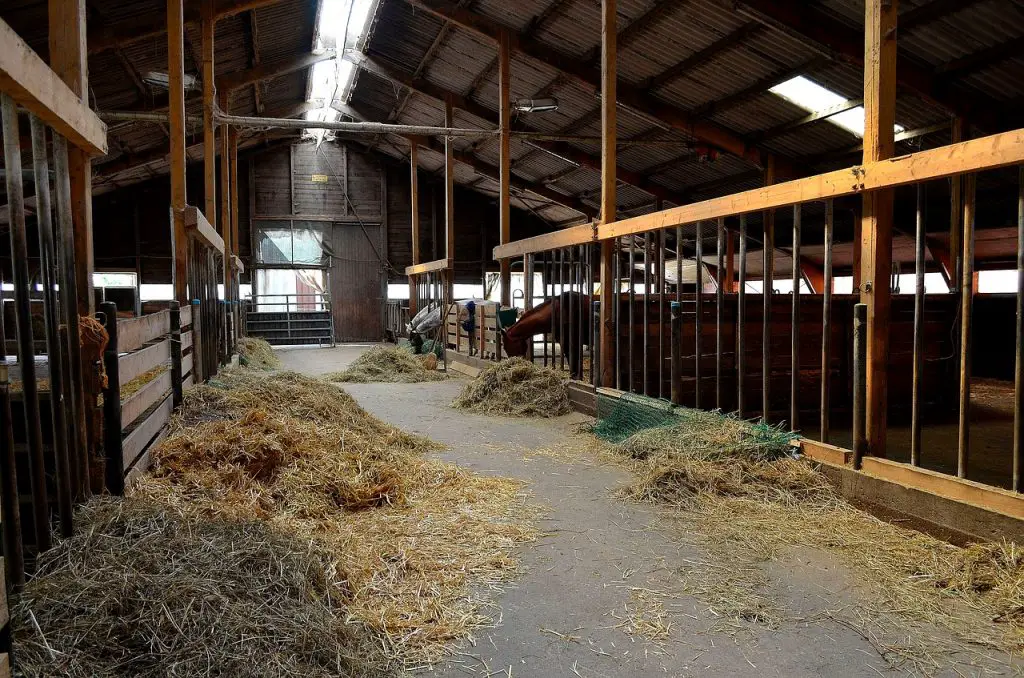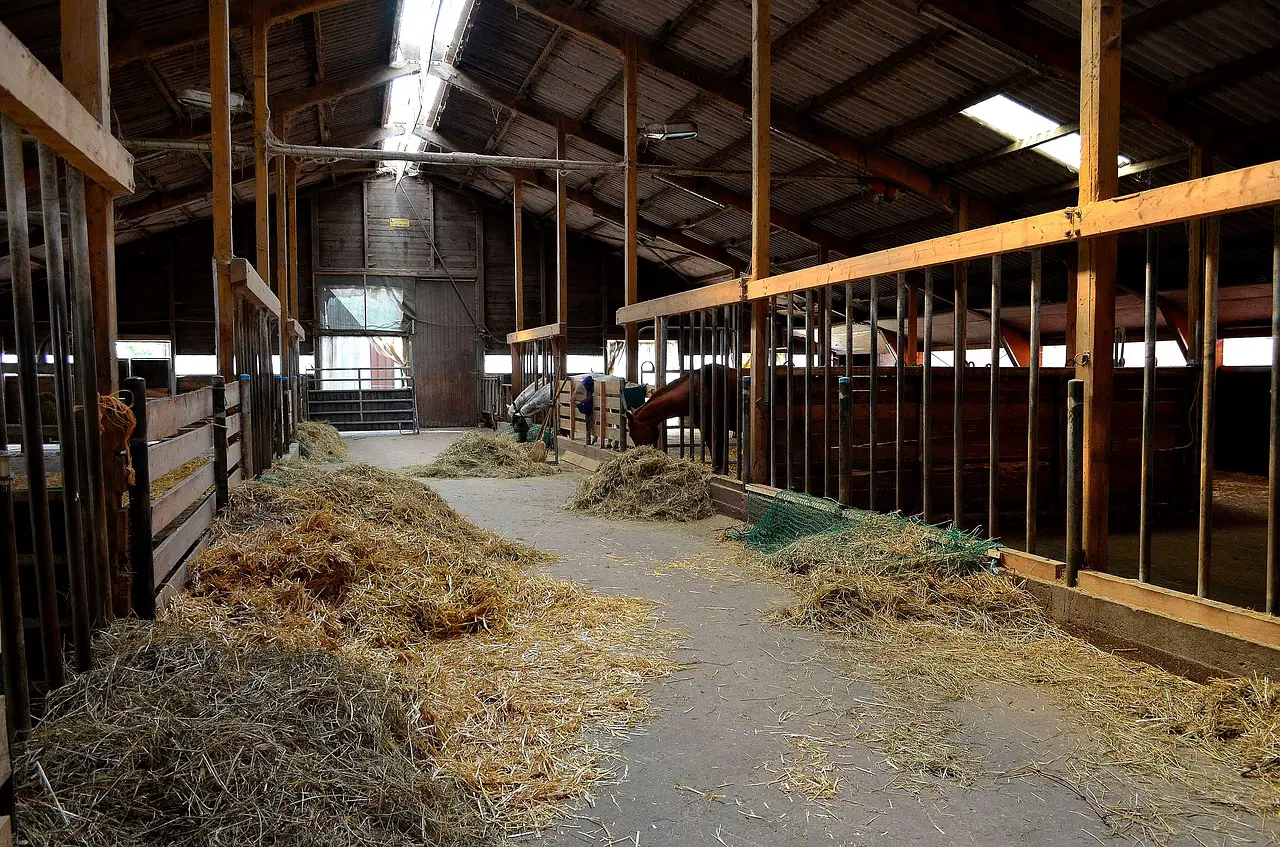Last Updated on February 25, 2022 by Allison Price
It can be difficult to choose where to board your horse. This will depend on your riding interests, financial resources, and other preferences. There are many options for boarding operations. You can choose from large stables that house 50 horses or a small barn that only takes a handful of clients. While some places are specialized in housing horses that are engaged in a specific discipline, others will accept horses of any type and talent. Some features are more important than others. To ensure that you choose the barn that meets your needs, make sure to have a list of things to check off when you are evaluating potential facilities.
Consider the farm’s location near your home, its cost per month, and whether or not you want access to a trainer, an indoor arena, or other amenities. Jenny Baldwin, an international FEI dressage competitor, is a certified Swedish instructor and has been awarded the title of Grand Prix Champion by the United States Dressage Federation 5 and Rocky Mountain Dressage Society 4 years consecutively. Because she is a trainer, she has access to horse owners and has stayed at large facilities. She also believes that horses of her clients and her own need the same level of care as top-tier competitors. Therefore, large stables have several aspects she considers relevant.
Policies and People
Baldwin recommends that you choose a property that is owned by someone who is a rider or is involved in horses. Baldwin says that if the person does not have a good understanding of horses and is sensitive to their needs, they might take shortcuts.
She has found that good barn managers can be hard to find and even more difficult to keep. Therefore, the stable owner should play an integral role in managing the horses’ care.
Baldwin believes that rules are important for boarding facilities. However, too many restrictions can be frustrating and overwhelming. Good rules are simple to understand and to follow. For example, be courteous to all at the barn and clean up after yourself. Respect an arena schedule for instructors and riders. Too strict rules, especially in relation to arena access and arena use, can limit the activities and enjoyment of a rider at a facility.

Dana Cernak, an avid endurance rider, agrees that rules can be important so long as they don’t overtax. Cernak sat on her horse for many years and now runs her own Longmont, Colorado, boarding facility. It is a simple act of courtesy at her farm to respect the quiet hours when no one is allowed at the barn between 9 p.m. – 7 a.m.
Cernak requires that anyone entering the property must sign a liability waiver. This applies not only to the horse owner, but also to his or her family members. So that there are no misinterpretations about the expectations of the horse’s boarder, Cernak sends out boarding agreements before the horse moves to the property. The contract includes information that covers everything from the date the boarding bill is due until the services the farm will offer. Contracts also include information about how the contract will end. For example, a written notice of 30 days to vacate the facility would be a good option. This is essential for potential boarders so that you can determine if you agree to follow the facility’s policies prior to signing the contract and moving your horse onto the property.
Amenities and Approaches
Baldwin emphasizes the importance of clean water, quality hay and feed being the most important features she seeks in a boarding facility. The hay should be fresh, clean, and free from mold and dust. Horses should be fed hay at least three to four times per day, in addition to their turnout.
Ask the farm how much each horse gets in turnout. Baldwin says that the amount of turnout you need will depend on whether you’re boarding a show horse or a youngster who needs to exercise in large fields. What material and condition is the perimeter fencing? Is the turnout done in small fields or alone in small paddocks? Baldwin suggests choosing turnout options that are appropriate for your horse’s temperament and riding goals.
The size of the stall depends on whether you’re boarding an Arabian or Warmblood. Horses need at least a 12-by-12-foot stall. However, horses with larger bodies require more space so they can stretch out and lie down comfortably. When inspecting a stable, be aware of any sharp protrusions or stall doors that aren’t flush with the floor, bottom rail, or sliding doors.
Anyone who is considering boarding facilities should be concerned about safety. Baldwin says that most stables with higher standards are safe because the fencing, stall doors and overall facility are all well-maintained. However, it is important to inspect the details, particularly in older facilities that have seen years of wear and tear.
It is important to have separate areas for grooming, washing, farrier, and veterinary work. This will ensure safety and convenience.
Baldwin also pays attention to the footing of horses in indoor and outdoor arenas, and how it is maintained. Horses can sustain limb injury due to repetitive concussion from training if they don’t have good footing.
Biosecurity measures that reduce the spread of infectious diseases at a facility are now well-known to horse owners. Ask the facility if they require a health certificate as well as a negative Coggins testing for horses that arrive on the premises, both for resident horses and visiting horses. Ask if there is an open or closed system at the boarding facility. Do they allow outside horses to be ridden or can friends bring their horses along for lessons? Some facilities prohibit the transporting of horses from non-residents except for special events.
Atmosphere & Expectations
Baldwin also evaluates the general atmosphere of a facility. Is the atmosphere happy? Are there positive feelings at the barn or negative?
Baldwin says that you might want to visit the barn at different times and on different occasions. Talking to the borderers is a great way to get their opinions on how their horses are doing at the barn and how satisfied they are with their care. You should also consider how the handlers treat horses. Is there a rapid turnover of barn staff? Is the staff friendly and enjoys their job?
You should pay attention to the condition of your horses. This includes their hair color, their appearance, their feet and how they behave around people. These details can reveal a lot about the horses’ health and well-being, as well as how happy they are with their environment and handling.
Ask Away
When visiting potential boarding facilities, ask questions to the owner/stable manager. Also, make observations.
- Is your feed area clean and free of varmints?
- Are there portable toilets or bathrooms for use at the border?
- Do you have a place to relax, socialize, or prepare food and drink?
- How often are the stalls cleaned each day?
- Are your shavings neatly stored?
- Are the barn’s vents working properly?
- How is the tackroom in general? Will the storage space be adequate for your needs?
- How are blankets and saddle pad arrangements made?
- Is there a place where you can find fire extinguishers?
- Is there a charge for feeding, blanketing or medication, as well as applying a fly or grazing mask or muzzle?
- Is there a place to wash saddle pads and other horse equipment?
- Is there a heated or covered arena for winter riding? What about an outdoor arena?
- Is there a round pen available?
- What is the policy regarding children and dogs?
- Are there specific wash stalls, grooming stalls, or veterinary work areas?
- Is it possible to bathe horses in hot water when it is cool?
- Who will handle my horse?
- Are the employees able to keep the horses and the area in great shape?
- Is the staff available for a reasonable amount of time and provide consistent care?
- What is the difference between a monthly fee and supplementary feed? Who provides it?
- How is pasture turnout organized? )?
- Is there shelter available for horses at turnout?
- Is there trail riding available in the area?
- Is it allowed to park your horse trailer at the site?
- How long do boarders last? Is there turnover due to people moving in and out with their horses?
–Nancy Loving DVM
Cernak believes that cleanliness in a facility is key to understanding how a barn manager cares for the property and ultimately the horses. She suggests that potential boarders interview the barn’s owners and be open to any questions they may have. Transparency and trust are key factors in boarder satisfaction.
Cernak says, “It’s good when, when you are a border, you get warm, fuzzy feelings when you step on the grounds and interact with the barn personnel.”
She also says that it helps her to communicate what she expects as a stable owner. In all cases, the expression “your mother doesn’t live here” is appropriate. People should clean up after themselves and leave the area in the same or better condition as they found it. Cernak says that a barn’s boarding staff must have a good rapport with their stable managers. Although this is not always possible, it makes for a more enjoyable experience. As a barn manager and boarder, she has learned to listen to her gut. If something feels off, it’s likely that it will be so going forward.
Cernak says, “As a barn manger, I want people come to me, see my facility and check the quality and storage for the hay. They also need to evaluate the tack space and storage space to store their equipment.” To assess the space available for their horses, they should inspect the stalls and pasture turnout. A retired horse may have different requirements regarding stabling and turnout than an athlete who is ridden daily. Cernak wants to know everything about each horse, including any vices, difficulties with handling, herd dynamics or medical issues. The sensible rules require that horses have a negative Coggins test, and are regularly dewormed. These practices are beneficial for the horse’s health as well as the horses that live with it.
You should also find out who inspects horses for injuries every day–the barn manager, staff–and alerts owners if there is a problem. This applies to any shoes that have been lost or any other situation that may affect a horse’s soundness or health. It is important to understand how a veterinarian will contact a horse if they are injured. If the horse’s owner is unable to be notified, the barn owner must grant permission to the veterinarian to contact them.
Take-Home Message
The above-mentioned factors apply regardless of whether you’re looking at a large boarding facility or a smaller one. No matter how you decide to evaluate a barn, it is important that you do your research thoroughly and visit the place on several occasions. Talk to other boarders about how they feel about the business. You must feel at ease with the boarding environment. Your horse will live on the property. Once your horse has become a regular part of the farm’s day, you can relax and enjoy riding.



